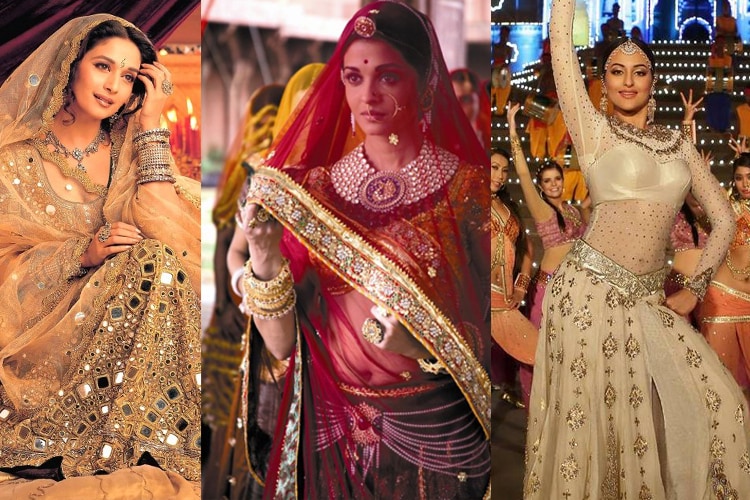


One is draped across the torso to create a saree like look while the other is a fan shaped piece with pleats that is tucked into the waist and falls just below it. The Bharat natyam costume consists of a type of blouse for the torso, a long cloth draped like a dhoti in the bottom half (this is mostly pre-stitched nowadays) and two addition pieces of cloth. Indian dance costumes for girls who are learning Bharatnatyam are quite distinctive in their look. Typically, Kathak costumes come with large golden borders, zari and zardosi embellishments and bright hues such as magenta, peacock blue, lustrous green etc. Children usually wear a long skirt and fitted tunic (reaching till the hips), with a dupatta or scarf tied across the body. Indian dance costumes for kids always tend to be a bit more light weight and comfortable, which is also the case in Kathak. Today, of course, an evolved version of the anarkali has become a very popular party wear outfit for women, but the traditional version worn with a spangled jacket is still the preferred Kathak dance costume for a lot of people. The followers of the Lucknow branch, influenced by Mughal cultures, traditions and arts, tend to wear anarkali salwar suits, while the followers of the Jaipur and Banarasi branch wear a classic version of the lehenga choli.

In Kathak, two types of costumes are worn. Some of the most popular traditional Indian dance costumes are those for dances such as Kathak and Bharat Natyam, which have specific cultural and regional origins but have today become popular with south-east Asian communities across the world, as well as with other cultures in India. Even though they are comfortable, they tend to be perfectly fitted and draped to create a streamlined silhouette on stage. Since many of the dance forms of India (especially the classical ones) have deep religious origins and connections, Indian dance costumes’ designs tend to have a mythological influence, displaying temple and religion inspired motifs and symbols. Thus they are often designed to not only create interesting and attractive visual contrasts, but also to make the dancer feel as comfortable and flexible as possible. Indian dance clothing is supposed to be the perfect outerwear in which the movements and positions of the dancer get highlighted beautifully. In Indian dance, costume is just as important as the actual movements and expressions of the dancer. Nevertheless, they all have certain common characteristics such as the use of bright colors and shining embellishments. There are as many varieties of Indian dance dresses as there are dance forms in India. Indian dance costumes are extremely vibrant and beautiful, to suit their nature as garments in which men and women are expected to perform. Though many of these share certain common factors, they are distinguished by their use of distinctive costumes and performance practices. From the colorful and popular folk forms such as Bhangda, Ghoomar and Dandiya, to the classical forms such as Kathak, Bharatnatyam and Odissi, all of them have their unique history and literature that is fascinating to any lover of art, theater and dance. A great example of the rich and impressive culture of India is the presence of different types of dance in almost every part of the country. Every region of the country has its own set of unique customs and practices, including various distinctive arts, crafts and handicrafts. Much of the glory of Indian culture in rooted in its multi-cultural society which is a melting pot of different types of religions and traditions.
#BOLLYWOOD COSTUME FULL#
India is often thought of as having a glorious, ancient culture full of unique traditions and practices.


 0 kommentar(er)
0 kommentar(er)
